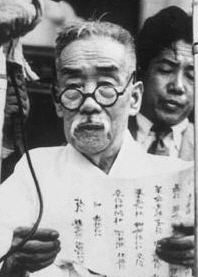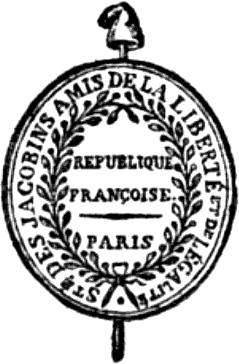|
Freedom Fighter, Lee Hoe-young
''Freedom Fighter, Lee Hoe-young'' () is a 2010 South Korean historical television series, starring Jung Dong-hwan, Ahn Jae-mo, Lee Ah-yi, Hong Il-kwon and Kwon Oh-joong. Based on the life of Korean independence fighter Lee Hoe-yeong, the drama was made to commemorate the centenary of the Japanese annexation of Korea. Its premiere coincided with the signing of the annexation treaty on August 21, 1910, and the drama aired on KBS1 from August 29 to September 12, 2010 on Saturdays and Sundays at 21:05 for 5 episodes. This was the third and last of the "noblesse oblige" series produced by KBS in 2010, following '' The Reputable Family'' and '' The Great Merchant''. At the end of the drama, a short documentary about Lee Hoe-young aired, including an interview with his sons, Lee Kyu-chang and Lee Kyu-dong. Synopsis When Japan annexed Korea, Lee Hoe-young donated all of his savings and moved to Manchuria to open a school. There, he trained soldiers and scholars who later led ... [...More Info...] [...Related Items...] OR: [Wikipedia] [Google] [Baidu] |
Sageuk
(; ) in Korean language, Korean denotes historical dramas, including traditional drama plays, Cinema of Korea, films or Korean drama, television series. In English language literature usually refers to historical films and television series (of South Korea). In North Korea, South Korean historical dramas are generally called 고전 영화 (Hanja: 古典 映畫, Revised Romanization of Korean, RR: ''Gojeon Yeonghwa'') or classic film. The first known historical film, ''The Story of Chun-hyang'' filmed in 1923, was directed by a Japanese filmmaker. The first Korean sound film was also . The heyday of Korean cinema began in the 1950s and lasted until the 1980s, with many films released, like Lee Gyu-hwan's Chunhyangga, Chunhyang adaptation in 1955. In the 1960s, historical melodramas were significant, as well as martial arts films. In the 1970s, due to the popularity of television, cinema started to decline, and in the 1980s it encountered a crisis, which prompted filmmakers to t ... [...More Info...] [...Related Items...] OR: [Wikipedia] [Google] [Baidu] |
Korea Under Japanese Rule
From 1910 to 1945, Korea was ruled by the Empire of Japan under the name Chōsen (), the Japanese reading of "Joseon". Japan first took Korea into its sphere of influence during the late 1800s. Both Korea (Joseon) and Japan had been under policies of isolationism, with Joseon being a Tributary system of China, tributary state of Qing China. However, in 1854, Perry Expedition, Japan was forcibly opened by the United States. It then rapidly modernized under the Meiji Restoration, while Joseon continued to resist foreign attempts to open it up. Japan eventually succeeded in opening Joseon with the unequal Japan–Korea Treaty of 1876. Afterwards, Japan embarked on a decades-long process of defeating its local rivals, securing alliances with Western powers, and asserting its influence in Korea. Japan Assassination of Empress Myeongseong, assassinated the defiant Korean queen and intervened in the Donghak Peasant Revolution.Donald Keene, ''Emperor of Japan: Meiji and his World, 1852� ... [...More Info...] [...Related Items...] OR: [Wikipedia] [Google] [Baidu] |
Pharmaceutical Company
The pharmaceutical industry is a Medicine, medical industry that discovers, develops, produces, and markets pharmaceutical goods such as medications and medical devices. Medications are then administered to (or Self-medicate, self-administered by) patients for curing or preventing disease or for alleviating symptoms of illness or injury. List of pharmaceutical companies, Pharmaceutical companies may deal in Generic drug, generic drugs, branded drugs, or both, in different contexts. Generic materials are without the involvement of intellectual property, whereas branded materials are protected by Chemical patent, chemical patents. The industry's various subdivisions include distinct areas, such as manufacturing Biopharmaceutical, biologics and total synthesis. The industry is subject to a Legal drug trade, variety of laws and regulations that govern the patenting, efficacy testing, Drug safety, safety evaluation, and marketing of these drugs. The global pharmaceutical market produ ... [...More Info...] [...Related Items...] OR: [Wikipedia] [Google] [Baidu] |
News Bureau
A news bureau is an office for gathering or distributing news. Similar terms are used for specialized bureaus, often to indicate a geographic location or scope of coverage: a 'Tokyo bureau' refers to a given news operation's office in Tokyo; 'foreign bureau' is a generic term for a news office set up in a country other than the primary operations center; a ‘Washington bureau’ is an office, typically located in Washington, D.C., that covers news related to national politics in the United States. The person in charge of a news bureau is often called the bureau chief. The term is distinct from a news desk, which refers to the editorial function of assigning reporters and other staff, and otherwise coordinating, news stories, and sometimes the physical desk where that occurs, but without regard to the geographic location or overall operation of the news organization. For example, a foreign bureau is located in a foreign country and refers to all creative and administrative operat ... [...More Info...] [...Related Items...] OR: [Wikipedia] [Google] [Baidu] |
Asahi Shimbun
is a Japanese daily newspaper founded in 1879. It is one of the oldest newspapers in Japan and Asia, and is considered a newspaper of record for Japan. The ''Asahi Shimbun'' is one of the five largest newspapers in Japan along with the ''Yomiuri Shimbun'', the ''Mainichi Shimbun'', the ''The Nikkei, Nihon Keizai Shimbun'' and ''Chunichi Shimbun''. The newspaper's circulation, which was 4.57 million for its morning edition and 1.33 million for its evening edition as of July 2021, was second behind that of the ''Yomiuri Shimbun''. By print circulation, it is the second List of newspapers in the world by circulation, largest newspaper in the world behind the ''Yomiuri'', though its digital size trails that of many global newspapers including ''The New York Times''. Its publisher, is a media conglomerate with its registered headquarters in Osaka. It is a privately held company, privately held family business with ownership and control remaining with the founding Murayama and Uen ... [...More Info...] [...Related Items...] OR: [Wikipedia] [Google] [Baidu] |
Kim Kyu-chul
Kim Kyu-chul (born April 6, 1960) is a South Korean actor. Kim spent more than a decade as a stage actor before he made his onscreen breakthrough in 1993 with Im Kwon-taek's '' Seopyeonje'', considered one of the classics of Korean cinema. Kim became most active in television, starring in dramas such as ''When I Miss You'' (1993) and ''Resurrection Resurrection or anastasis is the concept of coming back to life after death. Reincarnation is a similar process hypothesized by other religions involving the same person or deity returning to another body. The disappearance of a body is anothe ...'' (2005). Filmography Television series Film Theater Awards and nominations References External links * * * {{DEFAULTSORT:Kim, Kyu-chul 1960 births Living people People from Yangju Male actors from Gyeonggi Province South Korean male television actors South Korean male film actors South Korean male musical theatre actors South Korean male stage ... [...More Info...] [...Related Items...] OR: [Wikipedia] [Google] [Baidu] |
Choi Il-hwa
Choi Il-hwa (; born May 9, 1959) is a South Korean actor. He joined the Madang Sesil Theatre Group in 1983, and has since continued acting in Korean theater, television and film. Filmography Film *'' No Tomorrow'' (2016) *'' Wonderful Nightmare'' (2015) ( cameo) *'' The Treacherous'' (2015) *'' The Divine Move'' (2014) *''New World'' (2013) *'' Man on the Edge'' (2013) *'' The Peach Tree'' (2012) *''Fragments of Sweet Memories'' (short film, 2012) *'' The Traffickers'' (2012) *'' Deranged'' (2012) *'' Two Weddings and a Funeral'' (2012) *'' Helpless'' (2012) *'' Perfect Game'' (2011) *'' The Suicide Forecast'' (2011) *'' The Showdown'' (2011) *''You'' (short film, 2010) *'' Finding Mr. Destiny'' (2010) ( cameo) *''Magic'' (2010) *'' The Case of Itaewon Homicide'' (2009) *'' Goodbye Mom'' (2009) *'' My Dear Enemy'' (2008) *''My New Partner'' (2008) *'' My Tutor Friend 2'' (2007) *'' The Show Must Go On'' (2007) *'' Ad-lib Night'' (2006) *'' Hanbando'' (2006) *'' King and ... [...More Info...] [...Related Items...] OR: [Wikipedia] [Google] [Baidu] |
Vice President Of South Korea
The Vice President of the Republic of Korea was the second highest executive office in South Korea. It was established upon South Korea's founding on 24 July 1948, and abolished in 1960. The following is a list of vice presidents of South Korea since its independence. To avoid confusion, all the names on this list follow the Eastern convention (family name first, given name second) for consistency. The first column counts ''(individuals number)'' and the second column counts ''(administration number/term number)''. List of vice presidents of South Korea Notes #The results of the 1960 election were invalidated after the April Revolution. #The office of Vice President was abolished after 1960. References {{Reflist Lists of political office-holders in South Korea Lists of vice presidents, South Korea Vice presidents, South Korea Vice presidents of South Korea, * ... [...More Info...] [...Related Items...] OR: [Wikipedia] [Google] [Baidu] |
Yi Si-yeong
Yi Si-yeong (; December 3, 1868 – April 19, 1953) was a Korean politician, independence activist, educator and neo-Confucianist scholar. He was the first vice president of South Korea from 1948 to 1951.''Hanguksa daesajeon'' (한국사대사전 Encyclopedia of Korean History; 2004), Goryeo chulpansa (), p.1039 Yi resigned after the National Defense Corps incident of 1951. His art names were Seongjae () or Sirimsanin (). Before the Japan–Korea Treaty of 1910, he had served for Joseon Joseon ( ; ; also romanized as ''Chosun''), officially Great Joseon (), was a dynastic kingdom of Korea that existed for 505 years. It was founded by Taejo of Joseon in July 1392 and replaced by the Korean Empire in October 1897. The kingdom w ... as the Governor of South Pyongan Province and the President of Hansung Law Court. Work book * Gamseemanuh () Popular culture * Portrayed by Jo Young-jin in the 2010 KBS TV series '' Freedom Fighter, Lee Hoe-young''. See also * S ... [...More Info...] [...Related Items...] OR: [Wikipedia] [Google] [Baidu] |
Art Names
An art name (pseudonym or pen name), also known by its native names ''hào'' (in Mandarin Chinese), ''gō'' (in Japanese), ' (in Korean), and ''tên hiệu'' (in Vietnamese), is a professional name used by artists, poets and writers in the Sinosphere. The word and the concept originated in China, where it was used as nicknames for the educated, then became popular in other East Asian countries (especially in Japan, Korea, Vietnam, and the former Kingdom of Ryukyu). In some cases, artists adopted different pseudonyms at different stages of their career, usually to mark significant changes in their life. Extreme practitioners of this tendency were Tang Yin of the Ming dynasty, who had more than ten ''hao'', Hokusai of Japan, who in the period 1798 to 1806 alone used no fewer than six, and Kim Jeong-hui of the Joseon Dynasty who had up to 503. History China In Chinese culture, ''Hao'' refers to honorific names made by oneself or given by others when one is in middle age. After one ... [...More Info...] [...Related Items...] OR: [Wikipedia] [Google] [Baidu] |
Terrorist
Terrorism, in its broadest sense, is the use of violence against non-combatants to achieve political or ideological aims. The term is used in this regard primarily to refer to intentional violence during peacetime or in the context of war against non-combatants. There are various different definitions of terrorism, with no universal agreement about it. Different definitions of terrorism emphasize its randomness, its aim to instill fear, and its broader impact beyond its immediate victims. Modern terrorism, evolving from earlier iterations, employs various tactics to pursue political goals, often leveraging fear as a strategic tool to influence decision makers. By targeting densely populated public areas such as transportation hubs, airports, shopping centers, tourist attractions, and nightlife venues, terrorists aim to instill widespread insecurity, prompting Public policy, policy changes through Manipulation (psychology), psychological manipulation and undermining confidence ... [...More Info...] [...Related Items...] OR: [Wikipedia] [Google] [Baidu] |
War Correspondent
A war correspondent is a journalist who covers stories first-hand from a war, war zone. War correspondence stands as one of journalism's most important and impactful forms. War correspondents operate in the most conflict-ridden parts of the world. Once there, they attempt to get close enough to the action to provide written accounts, photos, or film footage. It is often considered the most dangerous form of journalism. Modern war correspondence emerged from the news reporting of military conflicts during the French Revolution and Napoleonic Wars. Its presence grew in the middle of the nineteenth century, with American journalists covering the Mexican-American War (1846-1848) and the European newspapermen writing reports from the Crimean War (1853-1856). History People have written about wars for thousands of years. Herodotus's account of the Greco-Persian Wars, Persian Wars is similar to journalism, though he did not himself participate in the events. Thucydides, who some ye ... [...More Info...] [...Related Items...] OR: [Wikipedia] [Google] [Baidu] |





